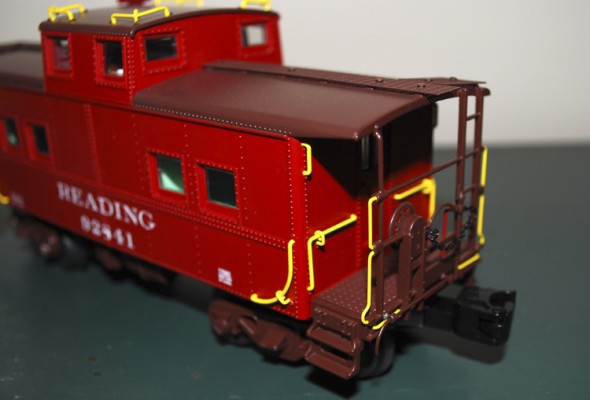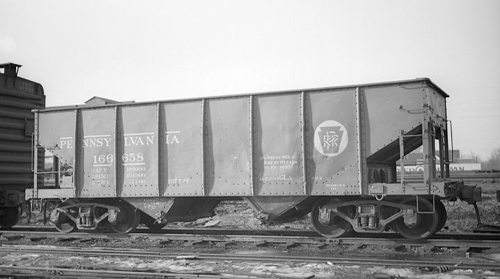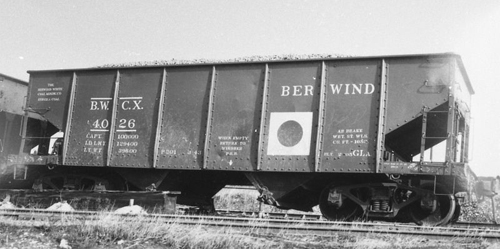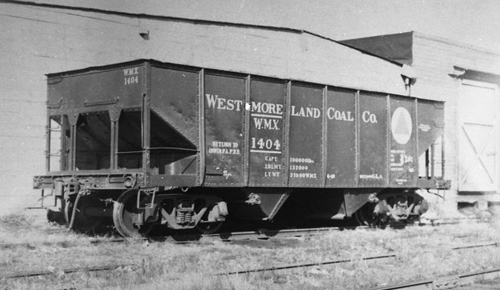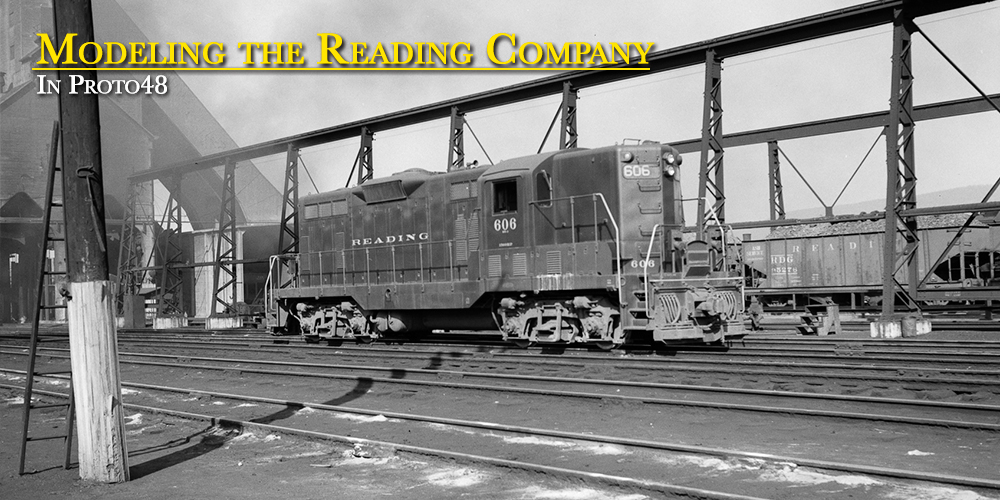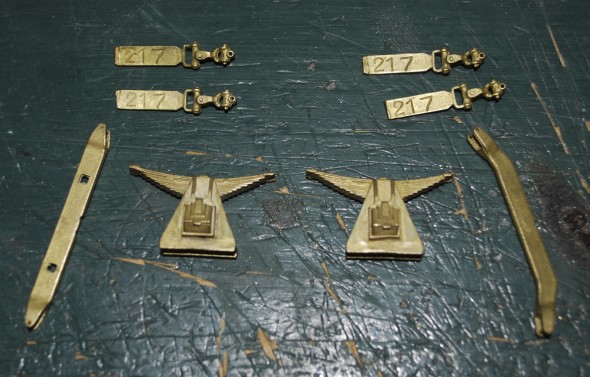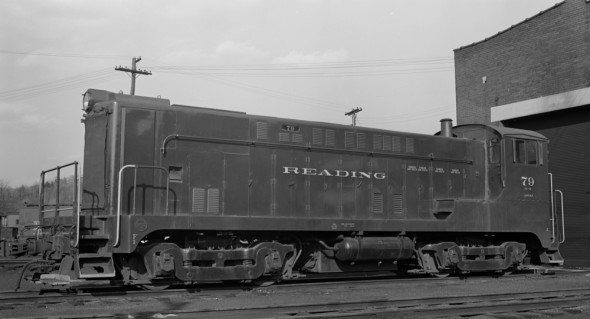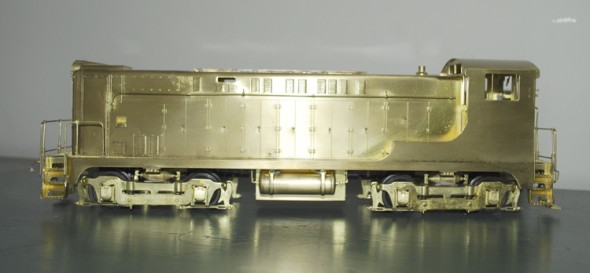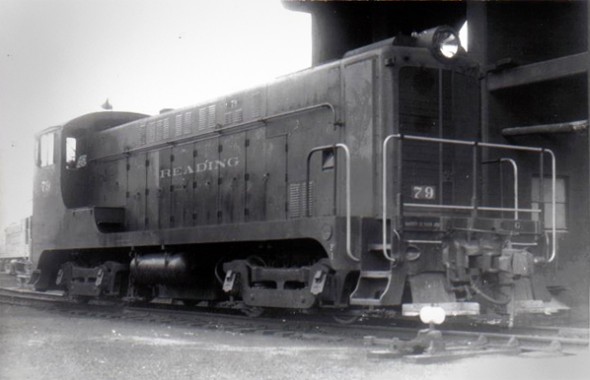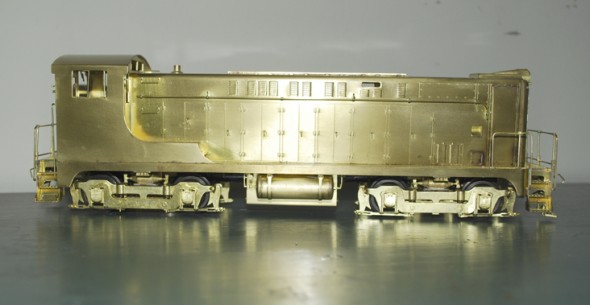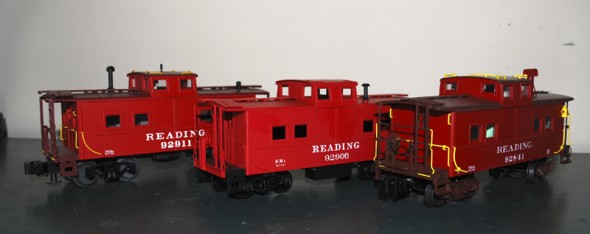
The three options – MTH, Weaver and Lionel
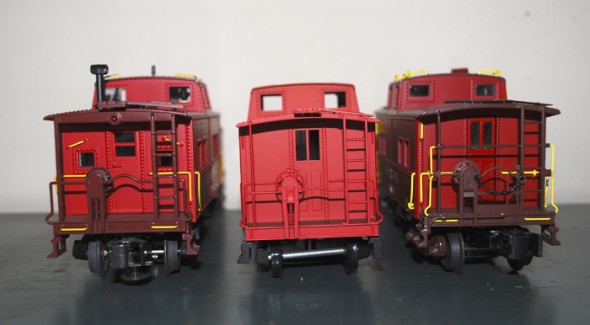
Three Ends – MTH, Weaver, Lionel
I’ve made a lot of posts about the locomotives on the front end of the train, at some point in time you have to think about the caboose at the other end.
One of the attractive things about modeling the Reading in O scale is that there are multiple options available for modeling Reading cabooses in both plastic and brass. We have been blessed with three plastic versions of the standard Reading NorthEastern Caboose. We have also had Brass versions built by Overland, Sunset, and International.
One thing that we should talk about first is that there is not really a Standard Reading North Eastern Caboose. There were a total of 285 Cabooses built from 1924-1948 in twelve different classes. Here is a chart of the different classes built and some of the detail differences.
| Class |
Numbers |
Built |
Qty |
Length |
UF |
Draft Gear |
Trucks |
RB |
CW |
Sheathing |
Toolbox |
| NMd |
90730-90739 |
1924 |
10 |
31′ 4″ |
RS |
Miner |
Taylor |
W |
W |
Steel |
Yes |
| NMe |
90710-90719 |
1926 |
20 |
31′ 4″ |
RS |
Miner |
Taylor |
W |
W |
Steel |
Yes |
| NMf |
90720-90729 |
1927 |
10 |
31′ 4″ |
RS |
Miner |
Taylor |
W |
W |
Steel |
Yes |
| NMg |
90700-90709 |
1930 |
10 |
31′ 4″ |
RS |
Miner |
Taylor |
W |
W |
Steel |
Yes |
| NMg |
92800-92809 |
1930 |
10 |
31′ 4″ |
RS |
Miner |
Taylor |
W |
W |
Steel |
Yes |
| NMh |
92810-92829 |
1931-32 |
20 |
31′ 4″ |
CS |
Gould |
Taylor |
W |
W |
Steel |
Yes |
| NMj |
92830-92854 |
1936 |
25 |
32′ 8″ |
WS |
Duryea |
Andrews |
Flush |
Integral |
Steel |
Yes |
| NMk |
92855-92879 |
1937 |
25 |
32′ 8″ |
WS |
Duryea |
Taylor |
Flush |
Integral |
Steel |
No |
| NMl |
92880-92929 |
1941 |
50 |
32′ 8″ |
WS |
Duryea |
Birdsboro |
Flush |
Flush |
Steel |
No |
| NMn |
92930-92979 |
1942 |
50 |
32′ 8″ |
WS |
Duryea |
Birdsboro |
W |
Integral |
Wood |
No |
| NMo |
94000-94049 |
1943 |
50 |
32′ 8″ |
WS |
Duryea |
Birdsboro |
Grating |
Grating |
Steel |
No |
| NMp |
94050-94074 |
1948 |
25 |
32′ 8″ |
WS |
Duryea |
Taylor |
Grating |
Grating |
Steel |
No |
Let’s look at the plastic options.
Weaver Northeastern Caboose
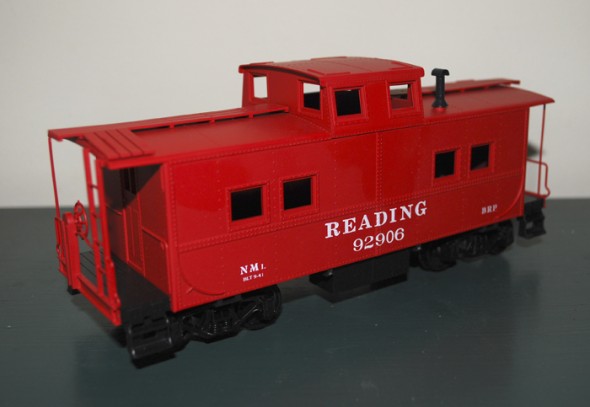
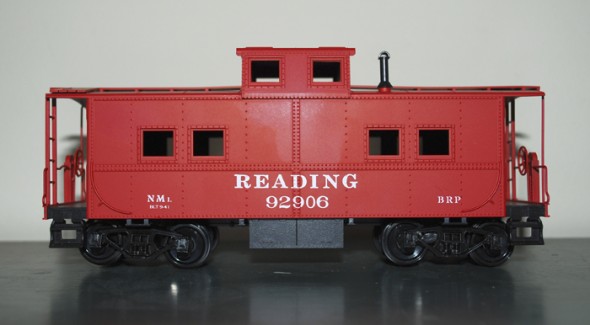
First and oldest of the plastic options is the Weaver Northeastern Caboose. It was originally released in the 1990’s and it shows it’s age. It has a wooden roofwalk which makes it correct for the early classes NMd, MNe, MNf, NMg and NMh. It also has the toolbox under the center of the caboose that these early caboose had.
Negatives:
- They have molded on grab irons
- Not that many different parts.
- The factory supplied trucks are wrong for 1952, they should have Leaf Springs in the trucks instead of the freight trucks supplied by Weaver.
- Factory Paint job is wrong Red/Black combination, it is a Red/Brown combination
- Cross members on the underbody should tapper to flush with the car body at the edge.
Positives:
- They can often be found very cheap at train shows and on eBay.
- Dispite their age they are accurate models
MTH Northeastern Caboose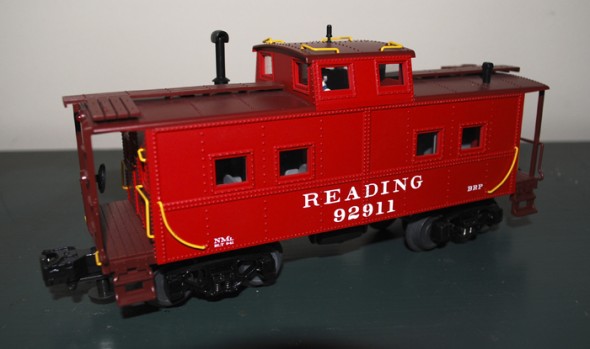
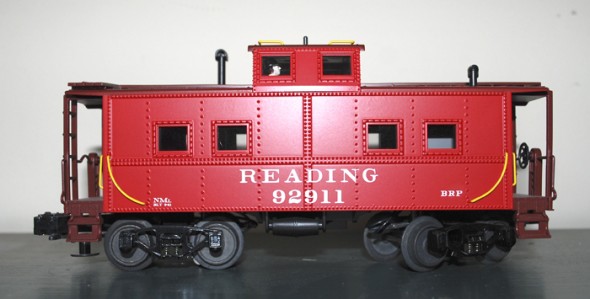
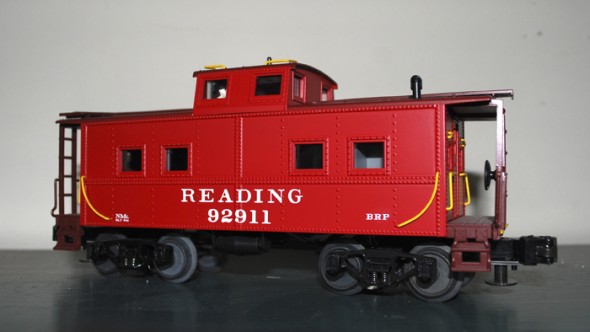
Next up is the MTH Northeastern Caboose. Of the three plastic models this is the only one with a true prototype problem. The windows on the side of the caboose are set too far apart.
Negatives:
- Windows not correctly spaced.
- The factory supplied trucks are three rail, no two rail version available.
- Trucks are wrong for a car with a wooden roofwalk, should be Taylor Caboose trucks
- Modern Roof vents for the lavatory inside date the model to a later version then my modeling period.
- Tool box should be under the cars with the wooden roof walks.
- Strange cyclops light on the end of the car.
- Also has MTH type of end casting that fills in under the roof line of the car.
Positives:
- Factory paint job is close Red/Brown combination. Trucks should be brown also.
- Separately applied grab irons but they are a little heavy and should still be replaced.
Lionel Reading Northeastern Caboose
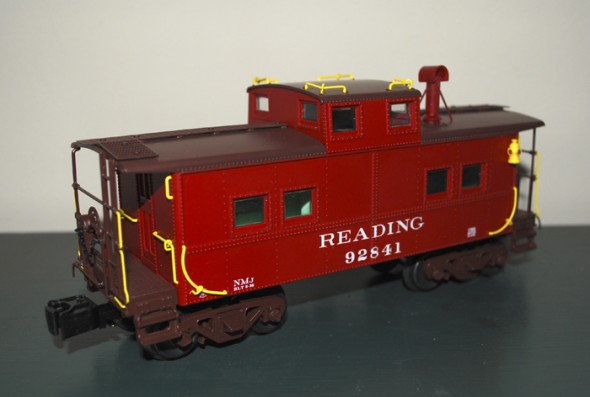
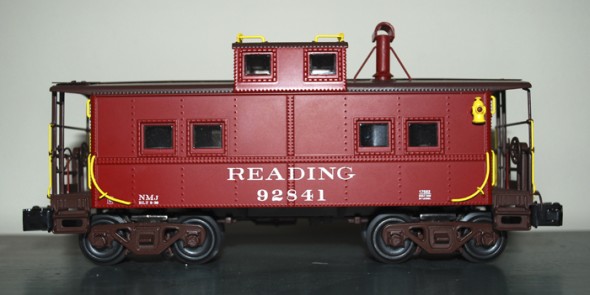
The Lionel Reading Northeastern Caboose #6-17682 is the most recent addition to the plastic options. It was first produced in 2007. As built, it is a model of the last two classes of cabooses NMo and NMp with a open grid roofwalk.
Negatives:
- Most expensive of the three plastic options.
- Oversized working smoke stack.
- Marker Lights are attached to one end.
- Only Three rail versions available from the factory.
- Grab Irons are oversized and should be replaced.
- No rivet detail on the roof.
- Lettered for a NMj, detailed for a NMo or NMp.
- The roofwalk has Lionel’s normal pins for holding down the roofwalk.
Positives:
- Factory paint job is a good start point.
- Great start point to build the modern classes of Reading Cabooses.
- Captured the slope of the end of the roof line over the steps (if viewed from the side)
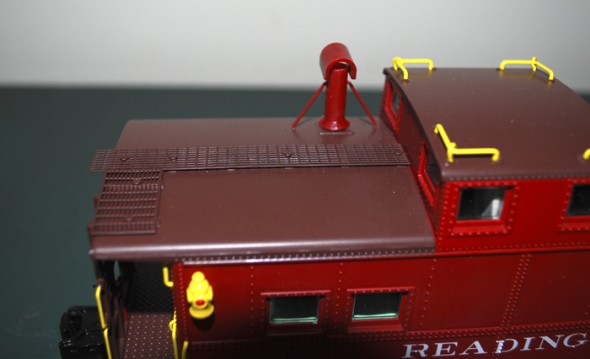
These detail photos show the lack of rivets on the roof. This can be corrected with Archer rivets.
